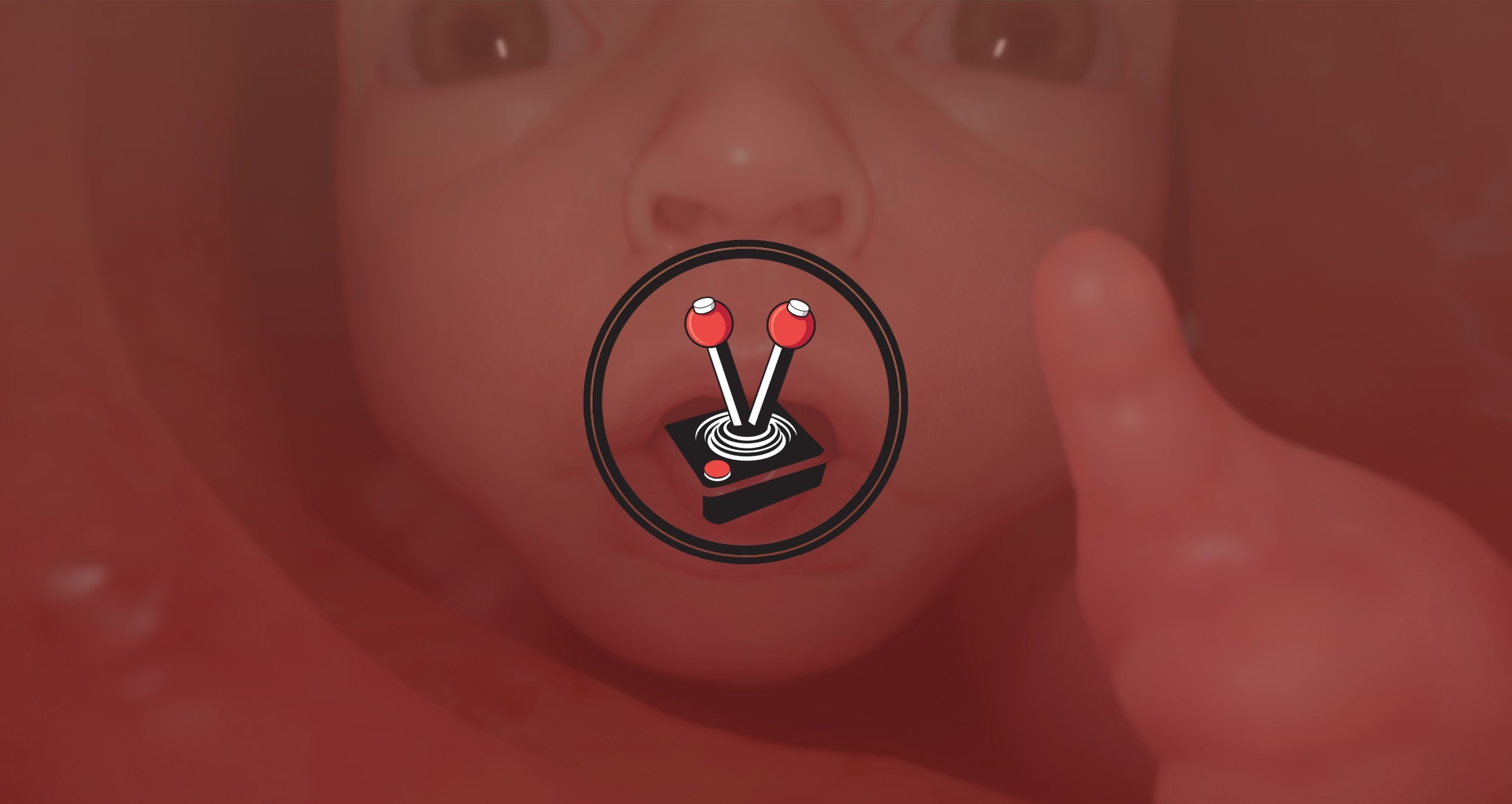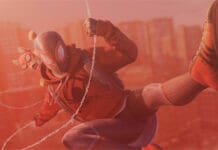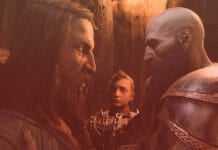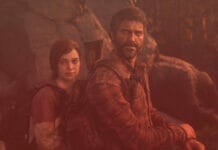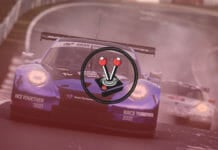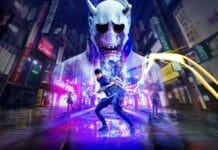If you have been on this planet long enough to have played any game from the legendary game director, writer, and producer, Hideo Kojima, you will be aware of his extremely unusual ways of writing. The Metal Gear Solid games may have started as simple stealth adventure titles, but the entire Metal Gear timeline has since evolved into an unorthodox hotpot of multiple overlapping timelines and characters who keep taking each others names. Sadly, the series fell off the deep-end as Kojima-san and long-time publisher Konami parted ways midway through the fifth major instalment’s production. Naturally, many fans were left in the dark, longing for more of the weirdly satisfying writing Kojima is known for. Fortunately, Death Stranding has arrived to fill the void.
Make no mistake: Death Stranding is very much a Kojima title. It has characters named in the weirdest ways possible, and a story so strange and foreign that you cannot help but move in closer for a better look. It has a charm to it I cannot describe, and I assume it must be from Kojima being released from the shackles of overbearing publishers. Simply put, Death Stranding is an incredible title. With this in mind, I trust you will join me on my journey as I elaborate on why you simply must play this title.
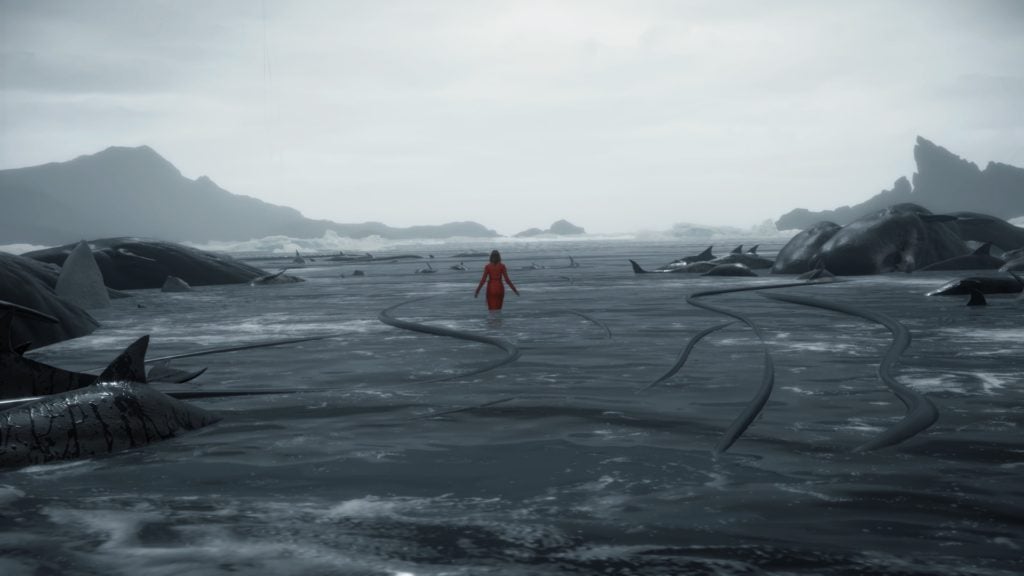
You are Sam Porter Bridges
The very concept of life and death is a topic many studios have tried to realise. Silent Hill, for instance, loves to bring aspects of limbo and hell together into one; while a game like Hellblade: Senua’s Sacrifice beautifully showcases the psychology behind illnesses causing a veritable hell-on-earth to manifest. Death Stranding, however, plays with an all new concept: the very essence of death, stranded.
Death Stranding takes place in the near future, several years after huge scientific breakthroughs have allowed humanity to link up to both sides of the coin that is ‘life and death‘. A consequence of using this technology is how it has plagued the landscape with supernatural beings and events, all of which are linked to the phenomenon called Death Stranding. As the player, you take on the role of Sam Porter Bridges. He is a porter of goods who travels from city to city to make ends meet. He might also be someone who could save humanity from annihilation, or he might be the cause of it.
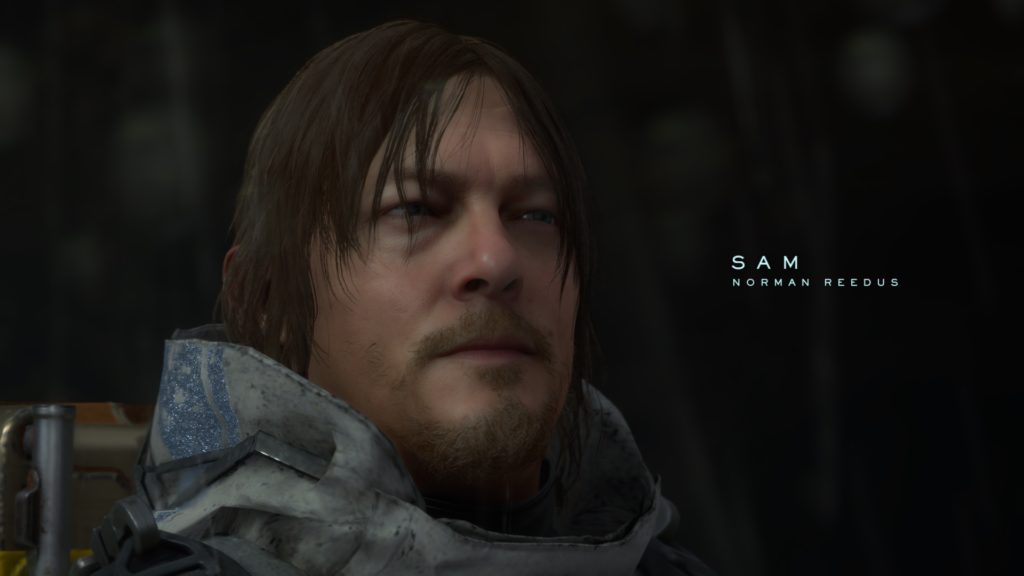
As the game begins, you are quickly made aware of how nothing is as it seems and danger lurks around every corner. For a start, the Death Stranding has caused rain to turn into Timefall. This is a phenomenon that ages everything it touches and continues to do so ad-infinitum until the last drop has fallen from the sky. It is up to you, the player, to quickly find shelter, and wait out the Timefall before you carry on to your next destination.
Ageing is not the only issue that comes with the Timefall. Thanks to humanity’s link with the other side, special people born with “DOOMs” have started to appear. Sam is one such person. In particular he is a repatriate, which means he can never really die. Therefore, Sam always returns from the “beach”. This beach is the strand that links life and death. As cool as it may sound, the beach also brings several horrors.
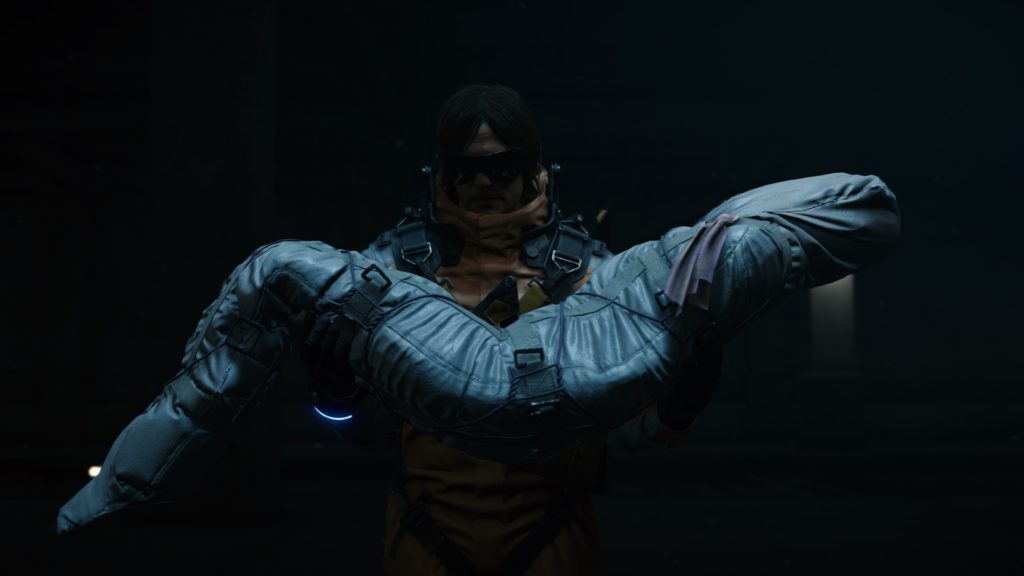
When traversing the landscape, it quickly becomes evident how Sam is never alone. Invisible and fearsome creatures scour the land, seeking their latest meal. As someone with DOOMs Sam can sense these creatures, but not enough to see them. BTs, or Beached Things, are creatures that are neither alive nor dead. Instead, they are stranded on the beach and cursed to walk the earth in search of anything to enhance their power. As such, they act as a constant threat to Sam and the people of America. While they cannot see you, they can hear and perceive you in the very same way that Sam can sense them. According to a key character you meet later in the story, humans may very well be the BTs to these creatures on their side of the coin – a mind bending concept to further acknowledge how nothing is ever as it seems in Death Stranding.
BTs will eventually move on and the Timefall will ease off, unlocking the world once more to explore. Sam must then go toward his next destination. Each new place reveals more of the world making up Death Stranding. The further Sam travels, the more surprises are revealed about who he is and why his journey across America is so integral to saving mankind from impending annihilation.
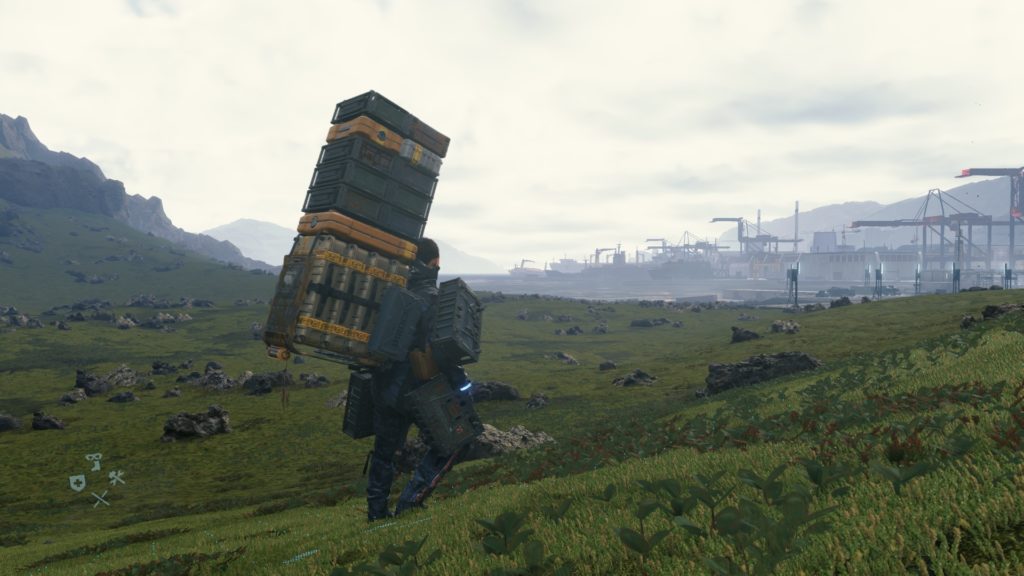
The world of Death Stranding is also a constantly moving and ever-evolving setting. Timefall is spotty and almost-always accompanied by BTs. Cities are huge, but Sam can only really explore their outskirts (more on that later), and the characters you meet are all full of personality and exceptionally well written. Death Stranding is all about connecting, reconnecting, and linking up with one another. As Sam you will meet an entire star-studded cast of characters who are both good and bad, eventually learn of Sam’s past, and possibly figure out how all of these characters are meant to intertwine with one another in order to change fate.
I cannot say more about the narrative without spoiling its excellence. With that said, the story component of Death Stranding is truly sublime. It never skips a beat and kept me enthralled for the 80+ hours I spent travelling toward the satisfying finale. It is very rare for an open world game to have such a large, wonderfully encompassing and outright fulfilling narrative spanning the duration of the entire game; and Death Stranding is all the better for it.
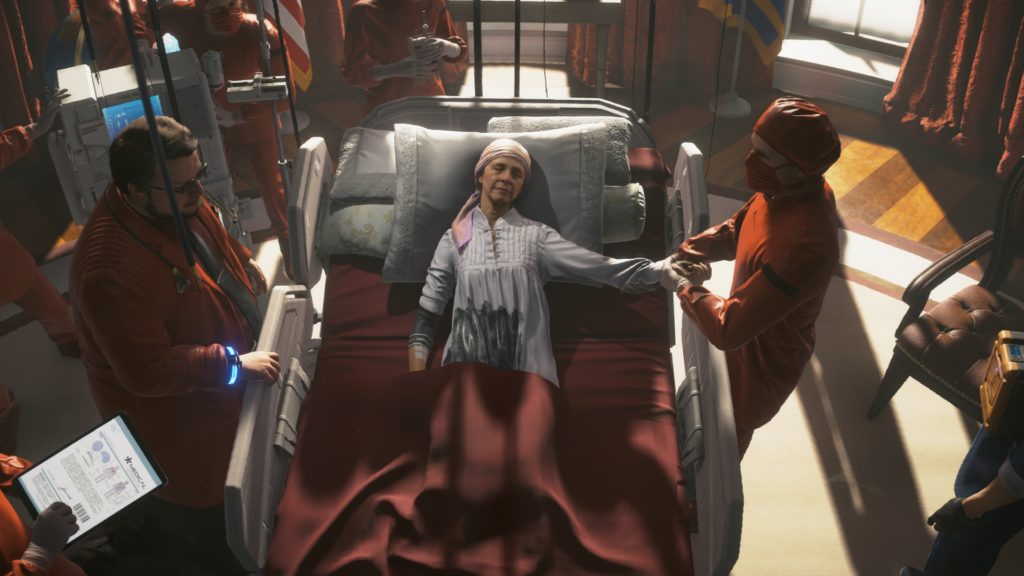
Go on, connect us to the chiral network
If you have ever seen the Transporter movies, you will know exactly what makes Sam’s job such an intriguing premise. Sam is a porter, thus a handler of goods. For all intents and purposes, he can be considered a courier. After all, it is his job to make sure certain goods make it safely from point A to point B; everything in-between be damned. The difference between Sam and the aforementioned films, however, is how he is on foot for pretty much the entirety of his journey.
While trekking across America on foot may sound like a boring endeavour, I cannot stress enough how much I enjoyed it. It is one of the absolute best experiences I have ever enjoyed in a video game featuring an open world! Not only does everything look beautiful, but the gameplay is so damn great it compliments every single thing you do in the open world.
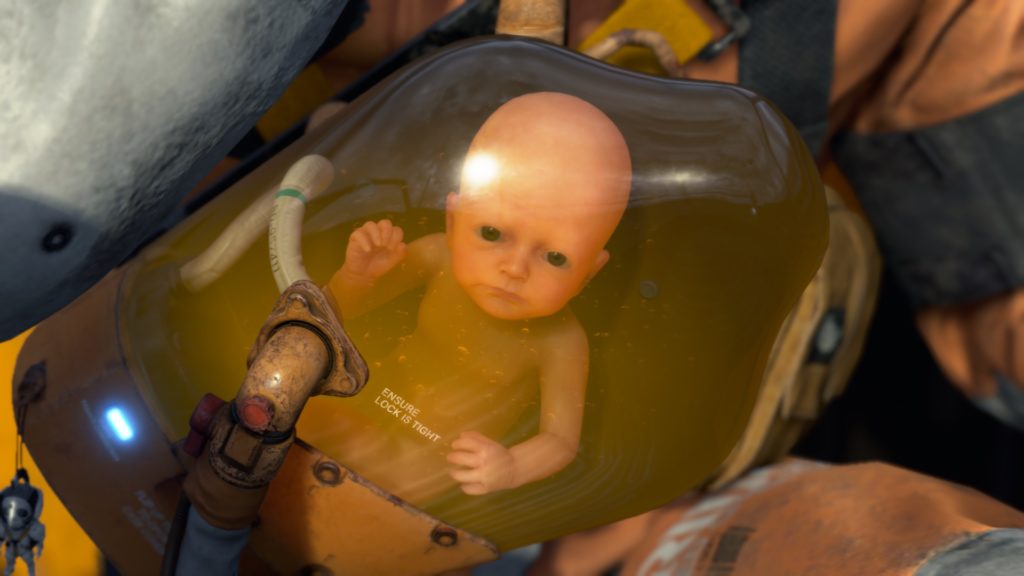
As a porter of goods, you will be given supplies that cannot become damaged or the mission risks failure. Rather, it is up to you to make the journey as easy as possible, with as much help as can be mustered. As you take on more missions, the fabricator eventually becomes available. The fabricator allows you to create the usual health and stamina boosts, as well as tools to help aid you in your journey. These items come by way of exoskeletons, bombs, and even vehicles you can unlock later on.
Sam’s arsenal will slowly become larger, and the number of things you can carry will raise exponentially. As you link more cities and bring them under the umbrella of the United Cities of America (UCA), you will meet new people who will help you in several ways. Fragile is a character you meet pretty much as soon as you start the game. Befriending her will eventually unlock a new way of travelling through the world. Diehardman will slowly warm up to your character and eventually be a source of unique new equipment if you can find a certain number of unlocks. Deadman, on the other hand, is a doctor who tries his best to keep you and your integrated BB-unit — a still-born baby, resuscitated and alive, but forever frozen in time and linked to its still-mother, another denizen of the beach — up-to-date and fully functional at all times.
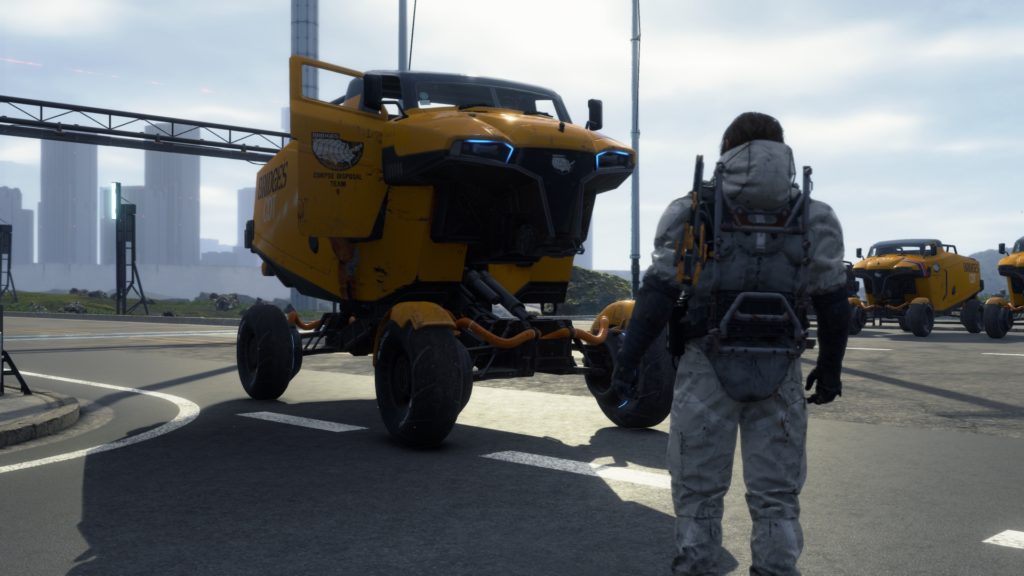
Beyond continually getting new gear and meeting people in Death Stranding, the open world is also complemented by how you can craft and utilise goods. Two great examples are how Sam can use ladders and ropes to get around. While these are extremely handy, the trade-off is all of these items have weight. This means you will have to prioritise mission goods over ladders and other enhancements. From the onset, Sam can only carry around 125 kg. This figure gradually increases as you level Sam up, and as you unlock exoskeletons and vehicles. Until then, however, you will have to get used to taking very few of these helpful items with you. I tended to default to a single ladder, rope ladder, and PCC on every excursion.
Ladders and ropes are easy enough to understand. PCCs, on the other hand, are totally new ways of crafting that I did not think would be in the game at all. With a PCC, Sam can craft any manner of things in the open world to aid future play. This means a single PCC can act as a postbox (for when you have deliveries to make, but cannot carry everything), a watchtower (an extra-far scanner showing everything on the heads-up-display), and even roads and bridges to make it easier to traverse the open expanses of America. The truly wonderful part about all of this, however, is how all of the ladders, ropes, and PCC creations you place in your world, will automatically populate in someone else’s game! Furthering the notion of how everything is connected, and nothing is as it seems.
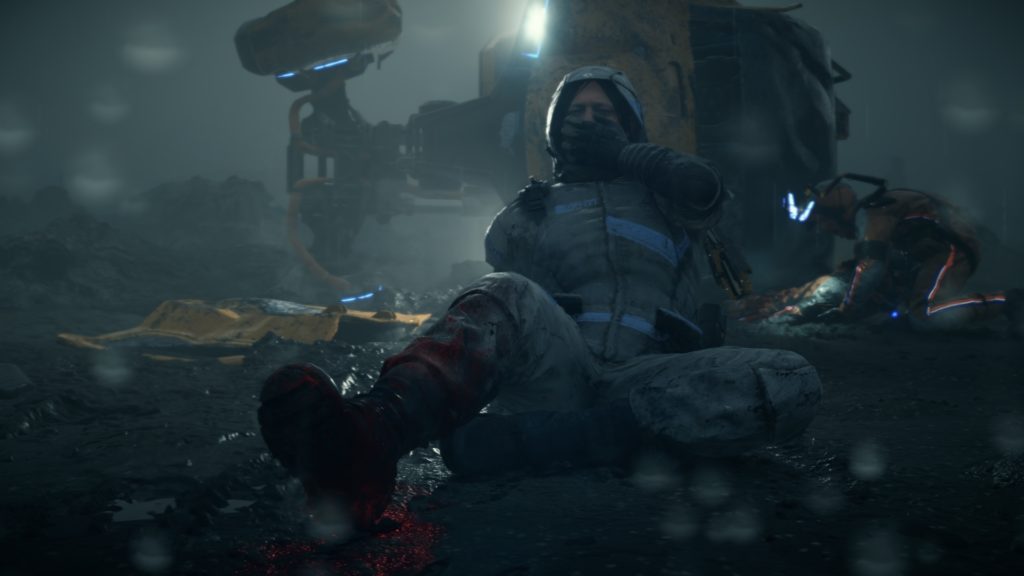
It may not be one of the biggest selling points, but Death Stranding also features online cooperation. While the pre-release period was void of much interaction, Kojima Productions promised it would work in the same way as games like Dark Souls. Essentially, while hundreds and thousands of people will put up countless ladders, the game will intelligently only show one or two, if any, to keep the feeling of loneliness as a central theme throughout the game. Interestingly, the game also caters to people who would rather just stay offline throughout their play through. When this happens, the game will intelligently place ladders, bridges, and other PCC creations throughout the landscape. Giving offline players the feeling of cooperating with otherworldly porters, without actually having to connect to any live services. A brilliant and truly thoughtful addition.
However, not everything is jolly cooperation in Death Stranding. There are various factions in the game, all with their very own interests at heart. Sam works for the UCA, the game’s main faction. With this in mind, it is up to you to link all of the cities of America with the chiral network. After all, humanity may succeed if we are all united! Unfortunately, people have lost faith in the president and the UCA over the preceding years. As a direct result, many cities and hovels have taken it upon themselves to become independent. While Sam will eventually link them all to the chiral network, they will retain their independence and merely function as distribution centres for orders. Nothing more.
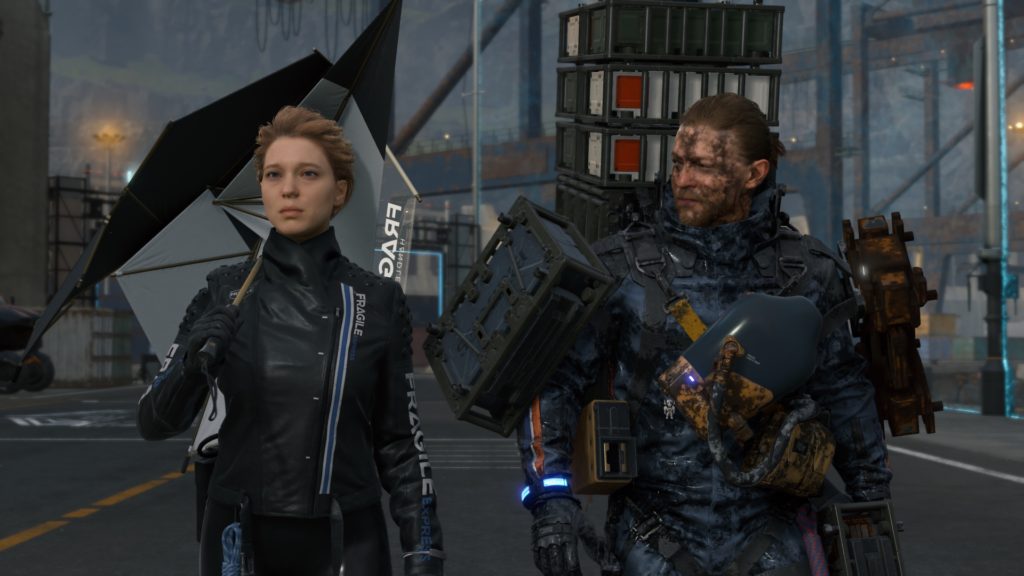
Another faction Sam will walk into a lot while journeying through America in Death Stranding, is that of MULE. They are single-minded terrorists who only care about one thing: cargo. If you are venturing across MULE territory and happen to carry cargo while you do, MULEs will undoubtedly come after you. Fighting them off is as simple as tapping square a lot. As the game progresses, however, you will have to fend them off using much more extreme measures. Fortunately, the later-game MULEs all drive around with trucks and bikes. Two vehicles Sam can also drive without issue! In my play through, I always took whatever truck I could find after taking care of any attacking MULES. It goes without saying how vehicles make it a lot easier to traverse the wastes, especially given how you can load most of your cargo into them for safekeeping! MULEs also have outposts, much like the UCA. These come by way of actual bases you can infiltrate. Doing so can net you tons of cargo or brand-new equipment to use against the very people who might have stolen from you in the first place.
Apart from MULEs, an additional terrorist faction will make themselves known as you carry on with the game. This faction, led by a man named Higgs, can seemingly control BTs. This unusual revelation is explained later in the narrative, and it creates wonderfully unique and dynamic gameplay. It was so refreshing, after roughly ten hours of habitual gameplay, for the game to change in pace in the way it did. Higgs showing up truly put a spanner in the works, so to speak, and I absolutely adored it. Little did I know, this change was merely the first of many to keep the gameplay fresh and exciting. At roughly ten hour intervals, something new and, more often than not, terrifying would appear in the game. Forcing players to adapt and overcome these new challenges. It is a fantastic way of ensuring the habitual nature of open-world gameplay remains interesting and fresh. It is one of the many reasons why Death Stranding is simply an outstanding title to enjoy and invest time into.
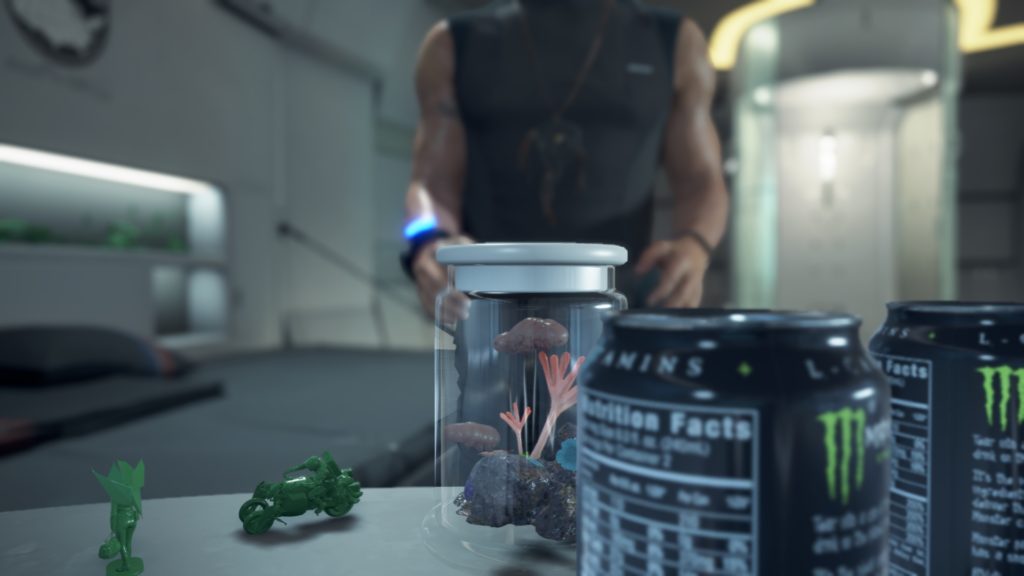
With factions out of the way, the most prominent feature of the game, bar none, is how Death Stranding incorporates music, both licensed and orchestral, into the various modes of gameplay.
Music is a beautiful part of the game. It integrates flawlessly into certain parts of the gameplay and narrative. I especially adored how many of Low Roar’s hits will start to play as Sam traverses a particularly uneventful stretch of the land. Similarly, I like how more upbeat tunes will fade in and out depending on Sam’s pace as he nears a particularly big hub – knowing how all threats are finally behind him, for the time being.
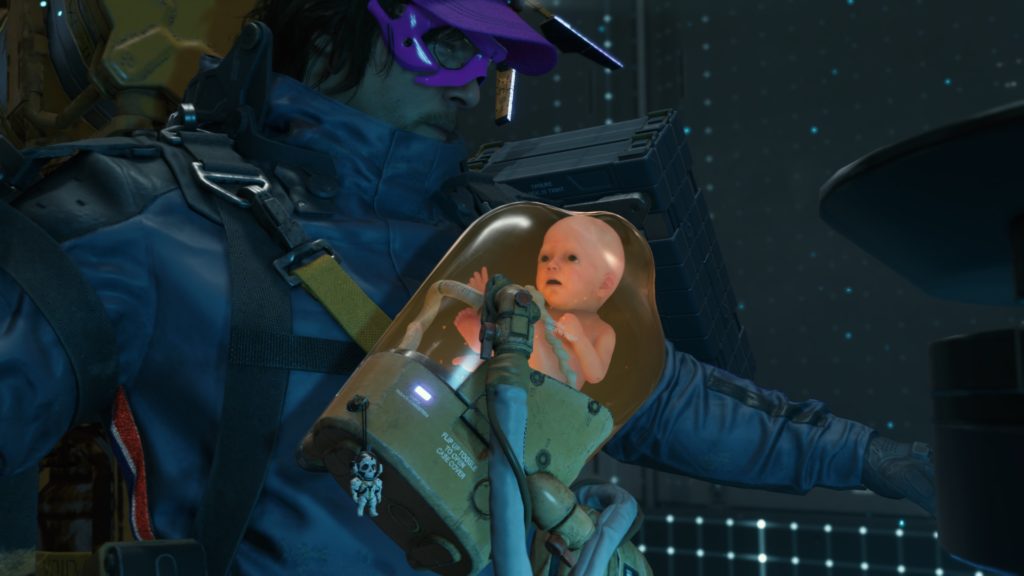
Looking good, Sam!
Considering how much love and attention the story, gameplay and audio received from all parties involved, I suppose it goes without saying how the visuals on offer are nearly flawless
The graphics, in particular, wow me every single time I boot up the game. Whether I load up from inside of a hovel somewhere, having saved right as Timefall starts to pour; inside a MULE camp, having trashed them all with a truck I stole and had to take a break; at a pivotal episode cliff-hanger, or even just a random stretch of road I have slowly been working toward fixing up; every single time I load into the game I am awestruck.
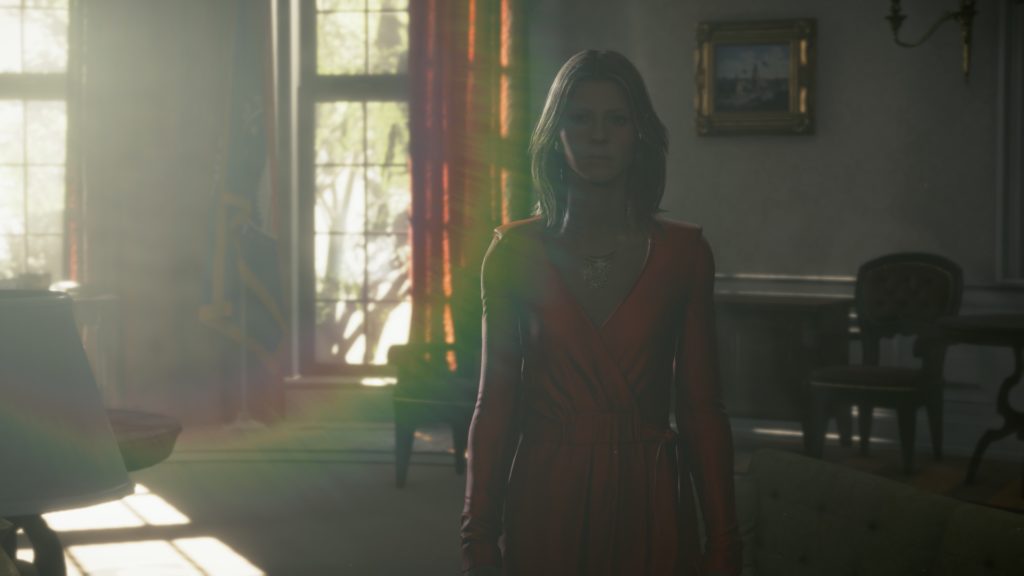
While my knowledge about the American landscape only stretches so far, I think it is safe to say Kojima Productions took many liberties with their cataclysmic take on it. I could not single out a unique or iconic American staple from any of the four or five major “biomes”. With that said, the completely fictitious setting was wonderful to explore. From the mountainous plains of the east, through to the rocky and arid wastes after Lake Knot City, and beyond, every piece of Kojima’s America proved to be filled with a heck of a lot more than anticipated.
Cities are vast and wide, with distribution centres dotted across America. As Sam successfully links each to the chiral network, a new part of the landscape is filled in on the map. Distribution centres are massive structures housing Sam’s private quarters, and also act as drop off and pick up points for cargo. While cities are few and far between, I really would have liked the option of exploring them property. For the most part, the cities themselves are inaccessible. The distribution centres are based on the outskirts of most cities. These you can explore, but the actual cities remain off limits. At least they always looked great, from the glimpses I could muster.
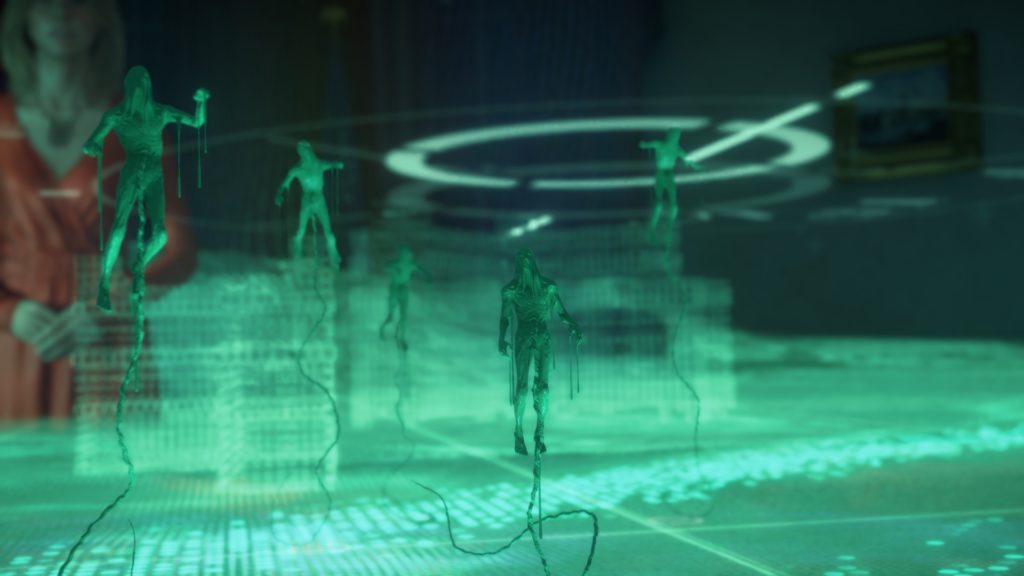
I also have to mention how much attention to detail the smallest of things appear to have in Death Stranding! Inside your bunker (“a UCA perk”), for example, a set of 3D-printed army men lookalikes are printed out as you progress through the game and hit major milestones. When you view them, Norman Reedus jumps from his bed excitedly to show the camera his collection, knowing full-well that they are not there for Sam, but rather, the player – yes you, dear reader.
Furthermore, jumping into the shower will cover Sam’s entire body with flowing water; while you can see Sam’s stubs and spotty beard when you look in the mirror. Your BB-unit’s incubator sits in the glass wall across from your bed – its various locking and moving mechanisms are open for your scrutinising gaze. Similarly, all vehicles feature hydraulic systems that keep them lifted, while bikes will wear down with every rock you hit. You can physically see the wear and tear the vehicles go through as you proceed through the open world. The attention to detail is incredible.
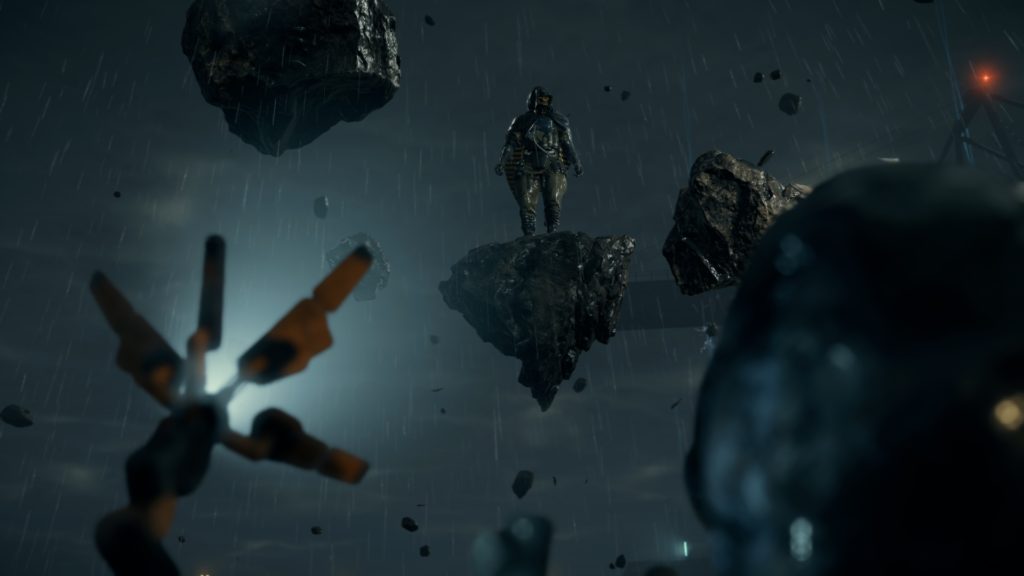
See you around
When Konami parted ways with Hideo Kojima, rumours suggested it was because of Kojima’s unimaginably large expectations for the games he attaches his name to. After my time with Death Stranding, I believe this might very well have been the case. Kojima-san and his team have managed to craft a memorable, utterly satisfying, and groundbreaking new game. Making Death Stranding very much Konami’s loss and an absolute winner for gamers.
From the onset, it is Sam’s mission to connect the people of America. To bring them together as a united people, to reconnect with what we had in the past – meaningful connections, whether via social media or otherwise. However, just like real-life, a connection is only a single part of the process. If you dig deeper into your psyche, a whole new world of possibilities and options will open up. Look hard enough, and you may even find what it is that makes you whole, as an individual. Death Stranding knows this, it understands this… it is this. Sam’s journey may be about connecting America, but the story and gameplay serve as a reminder about reconnecting with the past. To reconnect with each other, and to be true to yourself.
Attention to detail, nuanced storytelling, phenomenal visuals, and interesting gameplay, form the bulk of Death Stranding. From an elaborate story that simply needs to be experienced, to exceptional visuals where the finest details receive attention, through to hypnotic audio direction, and even copious amounts of refreshing gameplay to pad the open-world experiences; Death Stranding offers an unforgettable and beautiful experience unlike any other. I do not often praise games for being near perfect, but the magnificence of Death Stranding sure comes close.
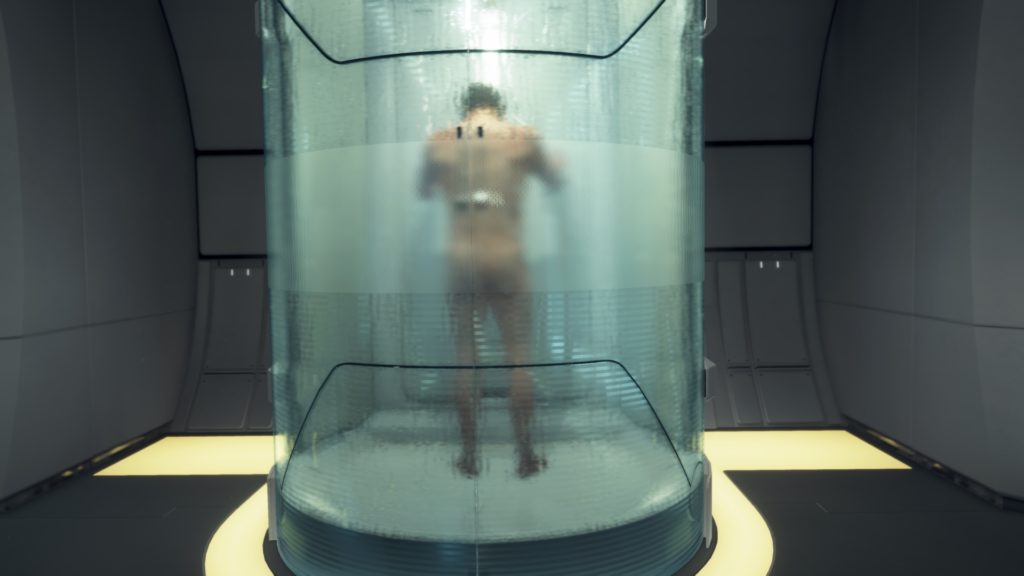
| Time Played | 80+Hours |
| Difficulty | Normal |
| Platform | PlayStation 4 |
| Acquisition | Review code courtesy of Sony Interactive Entertainment |
Death Stranding
R919Junior Editor at Vamers. From Superman to Ironman; Bill Rizer to Sam Fisher and everything in-between, Edward loves it all. He is a Bachelor of Arts student and English Major specialising in Language and Literature. He is an avid writer and casual social networker with a flare for all things tech related.

